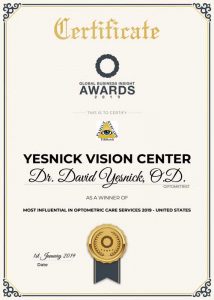Hearing the words “low vision,” “visual impairment,” or “blindness” from your eye doctor can be confusing. The more you know about the different terms, the better you can advocate for yourself or a loved one on the visual impairment spectrum.
Visual impairment is an umbrella term that describes any type of vision loss. Below are some terms to describe the various types of visual impairment:
Low vision - visual acuity of 20/70 or lower that can’t be improved any further with glasses or contact lenses.
Legally blind - vision of 20/200 or lower. A person is not considered legally blind if visual aids such as glasses can correct a person’s vision to better than 20/200.
Totally blind - a complete loss of sight.
Some people have partial vision. They may be able to see through only one half of their visual field, or have good central vision but very poor peripheral vision.
Does Low Vision Mean Blindness?
Low vision is vision loss, of 20/70 or worse, that can't be corrected with contacts, glasses or surgery. However, it isn't considered blindness, as at least some sight remains. Low vision can include poor night vision, blurry vision and blind spots. The most common causes of low vision are diabetes, age-related macular degeneration and glaucoma.
People with low vision or partial vision can benefit from a variety of visual aids to maximize their vision. Regardless of one’s degree of visual impairment, a person can benefit from accessible smartphone apps, e-readers, and many other types of adaptive technology.
Contact Yesnick Vision Center in Las Vegas to learn more about visual impairment and what it might mean for you and your vision.
At Yesnick Vision Center, we put your family's needs first. Talk to us about how we can help you maintain healthy vision. Call us today: 702-966-2020 or book an appointment online to see one of our Las Vegas eye doctors.
Want to Learn More? Read on!
FOLLOW US:


